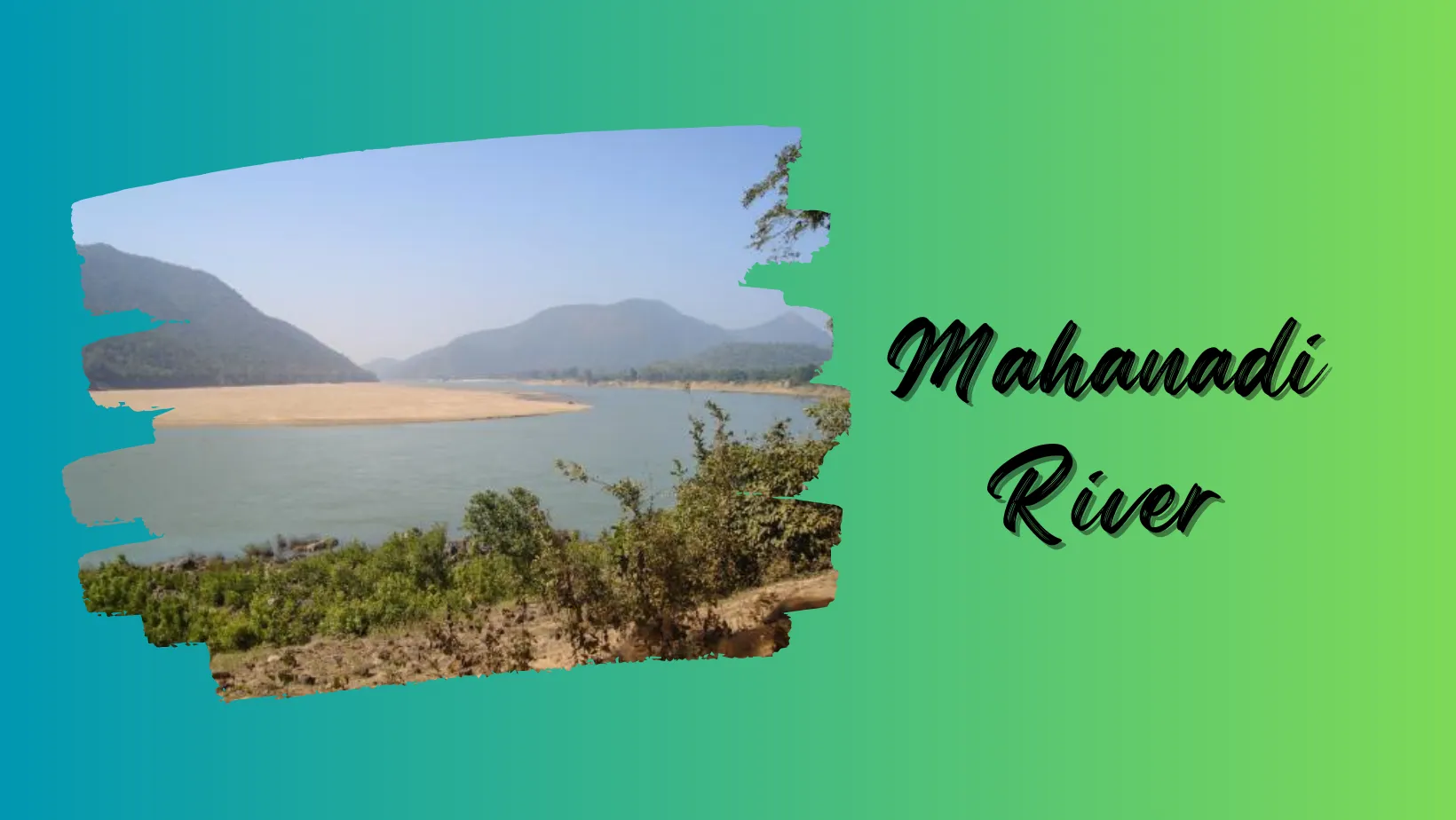Mahanadi River
Mahanadi River, a significant east-flowing peninsular river in India, emerges from the Sihawa range of hills in Chhattisgarh’s Dhamtari district. Spanning a distance of 860 km, the river winds its way through the landscape before ultimately emptying into the Bay of Bengal. Its origin in the picturesque Sihawa hills of Chhattisgarh contributes to its vital role in the region’s geography. As it traverses its course, the Mahanadi River serves as a lifeline, impacting the ecosystems it touches and sustaining communities along its banks. Finally, it culminates in the vast expanse of the Bay of Bengal, marking the completion of its journey. Mahanadi combines the Sanskrit words Maha = large, and Nadi = river. It is the largest river🌊 of Odisha.
| Origin | Sihawa, near Raipur in the state of Chhattisgarh to the south of Amarkantak Hill |
| Major Tributaries | Left-The Seonath, the Hasdeo, the Mand and the Ib Right- The Ong, the Tel and the Jonk |
| Length | 860 km |
| Basin Size | 132,100 km2 |
Origin of Mahanadi River
The Mahanadi River originates near Sihawa, in the vicinity of Raipur within the state of Chhattisgarh, situated to the south of Amarkantak.
Major Cities on the bank of Mahanadi
The Mahanadi River basin hosts key urban centers, including Rajim(Raipur) and Durg in Chhattisgarh, and Sambalpur, Cuttack, Sonepur, Kantilo, Boudh, Banki, Paradeep in Odisha. These cities play pivotal roles in the region’s development, benefiting from the river’s influence on agriculture, economy, and cultural practices.
Major Dams or Reservoir on Mahanadi
The Major dams and Reservoir on Mahanadi are the Hirakud Dam, the longest dam in India. Other noteworthy projects include Ravishankar Sagar, Dudhawa Reservoir, Sondur Reservoir, Hasdeo Bango, and Tandula, contributing to the region’s water management and development initiatives.
Some Important Facts about Mahanadi River
✅Chilika receives 61% of its inland flow from the Mahanadi river system, primarily through its distributaries, namely Daya and Bhargabi.
✅Ranked as the 8th largest river basin in India, it encompasses a total catchment area of 132,100 sq. km, constituting nearly 4.28% of the country’s total geographical area.
Challenges and Conservation
Despite its significance, the Mahanadi faces challenges such as pollution, over-extraction of water, and deforestation in its catchment area. These issues pose a threat to the river’s health and the well-being of communities dependent on it. Sustainable water management practices, afforestation initiatives, and pollution control measures are essential for the conservation of the Mahanadi.

